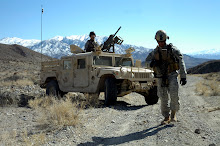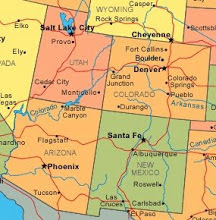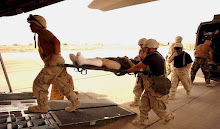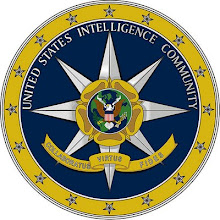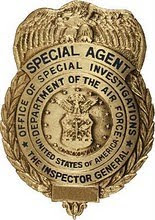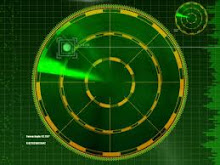By
Steve Hammons
(This article was posted 4/22/15 on the CultureReady blog, Defense Language and National Security Education Office, Office of the Undersecretary of Defense for Personnel and Readiness, U.S. Department of Defense.)
The Defense Language Institute Foreign Language Center in Monterey, California,
traces its roots to the secret World War II U.S. Army intelligence unit
comprised of Japanese-Americans – the Military Intelligence Service (MIS).
Then, as now, we needed to succeed militarily and also communicate with other
cultures and nations.
The MIS
was started in late 1941 as a unit to train Japanese-Americans (Nisei) to
conduct translation and interrogation activities. MIS men came mostly from
Hawaii and the West Coast.
The
missions of the MIS were highly classified and still are not widely known. Much
information about MIS activities remained classified until 1972 when President
Richard Nixon signed Executive Order 11652 making certain WWII intelligence
documents eligible for declassification.
After
the Pearl Harbor attack, the people of the United States found themselves in a
war with the military of a culture quite different from our own: Japan. The
Japanese military and Japanese society had, in many ways, a different social
fabric, a different psychology, different spiritual traditions and was a
different ethnic group in significant ways.
MIS
BEGINNINGS
After
Pearl Harbor, first- and second-generation Japanese-Americans in Hawaii and
California faced tough scrutiny by our defense and national security community.
Were there spies and saboteurs among them? Were they loyal to America or Japan,
or torn between the two?
In
California, in part due to racial prejudice and hate-mongering, patriotic
Japanese-American farmers, merchants, professionals and their families were
forced into harsh detention camps in remote regions of the West for the
duration of the war.
In
Hawaii, where Japanese-Americans were well-integrated into the community, there
reportedly were fewer attempts to randomly suspect or imprison them. Nisei
living in Hawaii generally did not experience the extreme measures faced by
those on the West Coast.
Meanwhile,
many young men from these families and communities joined the U.S. military, in
part to prove their patriotism. Many ended up in the MIS as well as the famed
and highly-decorated U.S. Army 442nd Regimental Combat Team and the
100th Infantry Battalion, fighting in Italy and elsewhere in Europe.
They
did all this while many of their family members were behind barbed-wire fences
in detention camps back in the U.S.
Young
Japanese-American men joined the military for many reasons including proving
their loyalty to the United States and proving that they were good Americans.
Many had been raised as somewhat typical American kids.
DEPLOYMENT
AND OPERATIONS
The MIS
organization included an administrative group, an intelligence group, a
counterintelligence group and an operations group. The MIS performed a very
wide range of important and often dangerous activities.
As
American and allied forces moved into the Pacific theater to engage the Japanese
navy and army, MIS men were on the tip of the spear, attached to U.S.
Navy, Army and Marine units as well as the joint Australian-American
"Allied Translator and Interpreter Service." MIS members served with
"Merrill's Marauders," the famous Army Ranger unit that conducted
operations in Burma against the Imperial Japanese Army.
MIS
personnel were active in nearly all major campaigns and battles in the Pacific
as well as in Burma and China.
According
to some assessments, MIS missions may have shortened the Pacific war by up to
two years.
They
performed intelligence and counterintelligence tasks such as intercepting radio
messages, interrogating prisoners, translating captured maps and documents,
helping in psychological and information operations efforts, infiltrating enemy
lines and flushing caves – convincing civilians and Japanese soldiers to leave
caves on remote islands, and persuading many Japanese troops to surrender.
MIS
interrogators reportedly used psychological and cultural understanding to
obtain valuable intelligence. Interestingly, MIS men reportedly provided decent
treatment for Japanese prisoners and obtained information by building rapport
with captured Japanese troops.
After
the war, more than 5,000 MIS personnel worked in Japan during the occupation by
the U.S. from 1945 to 1952. They were assigned to the occupation military
government in disarmament, intelligence, civil affairs, finance, education
and land reform. The MIS also helped develop the Japanese constitution.
LESSONS
LEARNED
The
United States fought a long military struggle in the Pacific. Then, we occupied
Japan with the goal of rebuilding and rehabilitating that society by implementing
a peaceful democracy. Both of these efforts were successful.
Men of
the MIS also demonstrated intelligence and compassion both during the war and
in the occupation. They helped win a military victory, then helped make peace
and win friends for the United States.
They
were key in rebuilding the nation of Japan and helping that society recover
from devastating social, psychological and physical damage.
In
examining the MIS, we must also ask why did these Japanese-American young men,
mostly from the west coast and Hawaii, join the MIS (and the 442nd RCT and
100th Infantry Battalion)? Why did they side with America against the military
of the land of their parents, grandparents and ancestors?
Although most were raised as American kids, they experienced significant racial
prejudice and discriminatory laws. After Pearl Harbor, Japanese American
families had been stripped of property and businesses and forced into the
infamous relocation camps. MIS men emerged out of this environment.
Now may
be the time to review the activities of the MIS and apply lessons learned.
These WWII veterans are now up in years and many have passed on.
Our
special operations forces and intelligence personnel would be wise to consult
these MIS vets whose language and human skills were so crucial in WWII. How did
the MIS conduct their intelligence and rapport-building operations? What can
MIS vets teach us?
As we
deal with global issues today, information about the MIS may provide useful
perspectives.
....................
For more information:
Go For Broke National Education Center website.
































































